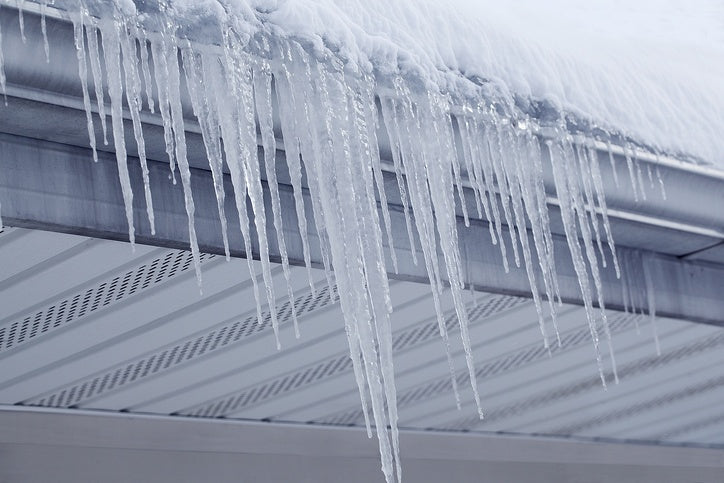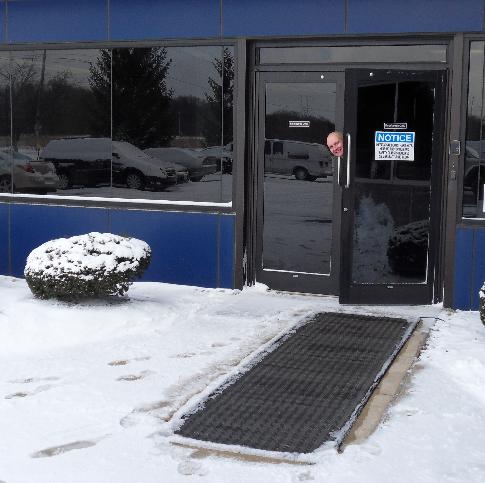
Every year, ice dams cause significant damage to commercial and residential properties that frequently costs thousands of dollars in repairs. One recent "nightmare scenario," for example befell a Wisconsin-based business. The ice dams were so extensive and the leak-damage so severe that it took $90,000 to get the facility back in good working order.
Protecting your facility from ice dam damage and from the safety hazards that ice dams create is of the utmost importance. First, we will address the causes of ice dams and the process by which they form, and then, we will note some solutions for preventing or removing ice dams.
Ice Dam Formation
Ice dams form when snow melts in the middle area of a roof and then runs down to the eaves and refreezes. The reason that this happens is that the heat from inside the building rises and warms the underside of the roof, which then in turn raises the outer roof temperature above 32°F (0°C). The edges of the roof, however, have no heat source below them and remain at sub-freezing temperatures.
Poor ventilation and insulation lead to a warmer roof and a bigger ice dam problem. Hot air needs to be blocked off from the roof decking but allowed to escape in a controlled way through soffit vents and roof vents. Simply over-heating a building to begin with is also a potential cause of ice damming.
Ironically, it is after a heavy snowfall and during times of extreme cold that your roof is most likely to heat up and produce an ice dam. This is because a deep blanket of snow on your roof makes for excellent insulation, trapping in the heat and accelerating the melt-rate of snow. Heat will also move more quickly when temperature differences are more extreme, and colder weather means faster freezing at the eaves.
Problems Caused by Ice Dams
When left unattended, ice dams can grow to enormous sizes, back up under roof shingles, and cause leaks to develop. Water will drip inside the building and ruin drywall, make paint peel, and damage wood flooring. Given ideal temperatures and humidity levels, mold will also likely result.
The water backed up behind the ice dam may not only cause leaks, however. It may also cause huge icicles to form and occasionally break and fall on entryways. Water may also drizzle down onto the entryway and refreeze, creating a slipping hazard.
The expense of preventing and removing ice dams can sometimes be great, but the dangers and expenses of not doing so are even greater.
Solutions to Ice Dam Problems
While extreme weather conditions sometimes make ice dam formation inevitable, there are ways to minimize the risks. Some of the most important solutions include:
- Upgrade under-roof insulation and increase building ventilation. Fan-powered vents are especially effective.
- Clean and unclog all gutters and downspouts before winter to prevent melt-off from getting backed up.
- Remove excessive snow from the roof with a roof rake with a 15 to 20 foot (4.5 - 6 m) handle.
- Use heat trace cables on the roof to melt a pathway in the snow for the water to run off the roof, so it doesn’t back up into the shingles.
- Hire a professional contractor to remove an ice dam by a high-temperature, low-pressure steaming method.
- Get ice dam repairs and removal covered on your facility's insurance policy.
- To prevent ice dam melt-off from refreezing and creating a safety hazard, use a heated floor mat at entrances.
If severe winter storms make ice dams unavoidable, professional steam removal may become necessary. However, by taking action ahead of time, you can often prevent the formation of ice dams on your facility. Doing so will save money, enhance safety levels, and ease your overall commercial snow removal.


